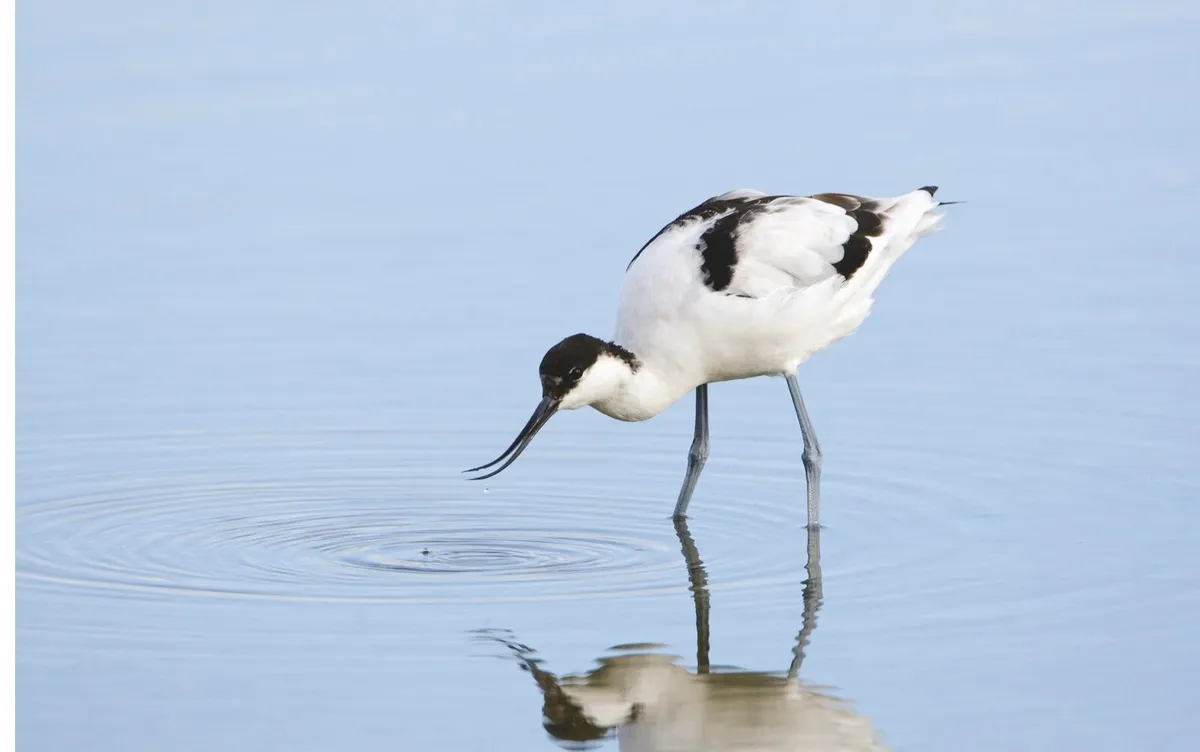At more than 400 hectares, Rainham Marshes (together with adjoining Wennington and Aveley Marshes) is the largest remaining expanse of wetland in the upper Thames Estuary.
The most striking aspect of this marshland is not, surprisingly, the wet muddy ground or the intricate labyrinth of drains and ditches, nor even the fields of gently waving grasses, it is that there is just so much sky above it. Lacking the interrupting trees and hedgerows that foreshorten the views of more rolling countryside, these meadows, divided by sunken dykes, stretch away into a seemingly impossible distance.
Former military firing ranges, Rainham’s medieval marshes were protected against urban development until the RSPB bought them in 2000. The area now ranks as one of the most important wildlife sites in the London area.

Wildlife at Rainham Marshes
Great silver diving beetle
Although black in your dipping net, the underside of this huge beetle, one of our largest insects, appears silver in the water because of a bubble of air held against its body. The wrinkled larva is aquatic, but emerges on to dry land to transform into the adult, and can be found crawling over paths. At dusk, listen for a whirr, a brief silence, then a plop, as a flying beetle folds its wings in midair and drops into the water.
Avocet
Absent from Britain for nearly 100 years due to hunting and habitat destruction, these exquisite birds are one of our better conservation successes, and now the emblem of the RSPB. Increasing numbers breed each year along the east coast, and they now visit the Thames. They favour flooded brackish lagoons, where they sweep back and forth with their upcurved bills just under the surface of the watery mud.

Water dock
Our largest dock species, reaching nearly 2m (6½ft) high. It grows on ditch banks, often directly out of the shallow water. The large leaves are tapered at both ends and the veins are at right angles to the midrib to give a ladder formation. In summer, the giant branched flower heads turn to seeds, first green, then maturing to red and brown. The leaves are supposedly edible and the ground-up root can be used as a toothpaste, but high levels of toxic oxalic acid make them rather sour.
Scarce emerald
The metallic green darning needles fluttering through riverside herbage are scarce emerald damselflies (Lestes dryas). Apart from its shining green body, it holds its wings distinctively at rest, in a delta of about 45º, rather than folded together along its body (as do other damsels) or held out at right angles (as do dragonflies). The common emerald (Lestes sponsa) also occurs here, but the males of that species have a blue-ish thorax.
Water vole
The original The Wind in the Willows ratty is declining in the wider countryside because of mink escaped from fur farms, but Rainham is, thankfully, still mink-free. Secretive in the bankside vegetation, these charming rodents are usually seen swimming in the dykes, their blunt nose above the water. They make characteristic feeding stations, piles of cut grass stems. Also look for latrines near the water’s edge – old droppings trodden flat on to the mud with fresh pellets scattered on top.

Brown hawker
Looking larger than some of the birds flying over the water surface with it, this dragonfly can be identified from just a far-off glimpse. Its brown wings show clearly, even when it is patrolling low over the distant water. Up close, its stout brown body is marked with blue and yellow, and its wings rattle audibly as they brush each other. Together with the emperor (Anax imperator), which also occurs here, the brown hawker competes for the title of Britain’s largest dragonfly.
Useful Information
HOW TO GET THERE
The reserve is off New Tank Hill Road (A1090) in Purfleet, which is just off the A1306 between Rainham and Lakeside. Purfleet train station is on the C2C line from Fenchurch Street. The reserve is a 15-minute walk from the station.
FIND OUT MORE
Rainham Marshes
Purfleet RM19 1SZ
01708 899840
www.rspb.org.uk
RSPB members and local residents get in free, otherwise entry to the reserve is £2.50 for adults and £1 for children. Voluntary £1 car parking. Open Apr-Oct, 9.30am-5pm; Nov-Mar, 9.30am-4.30pm.
EAT
Royal Hotel
London Road, Purfleet
RM16 1QA
01708 865432 theroyalpurfleet.co.uk
This Grade II-listed building has cracking views across the Thames.
The Fleet
London Road, Purfleet
RM19 1RJ
01708 890999
www.thefleetpub.co.uk
Small, friendly pub.
